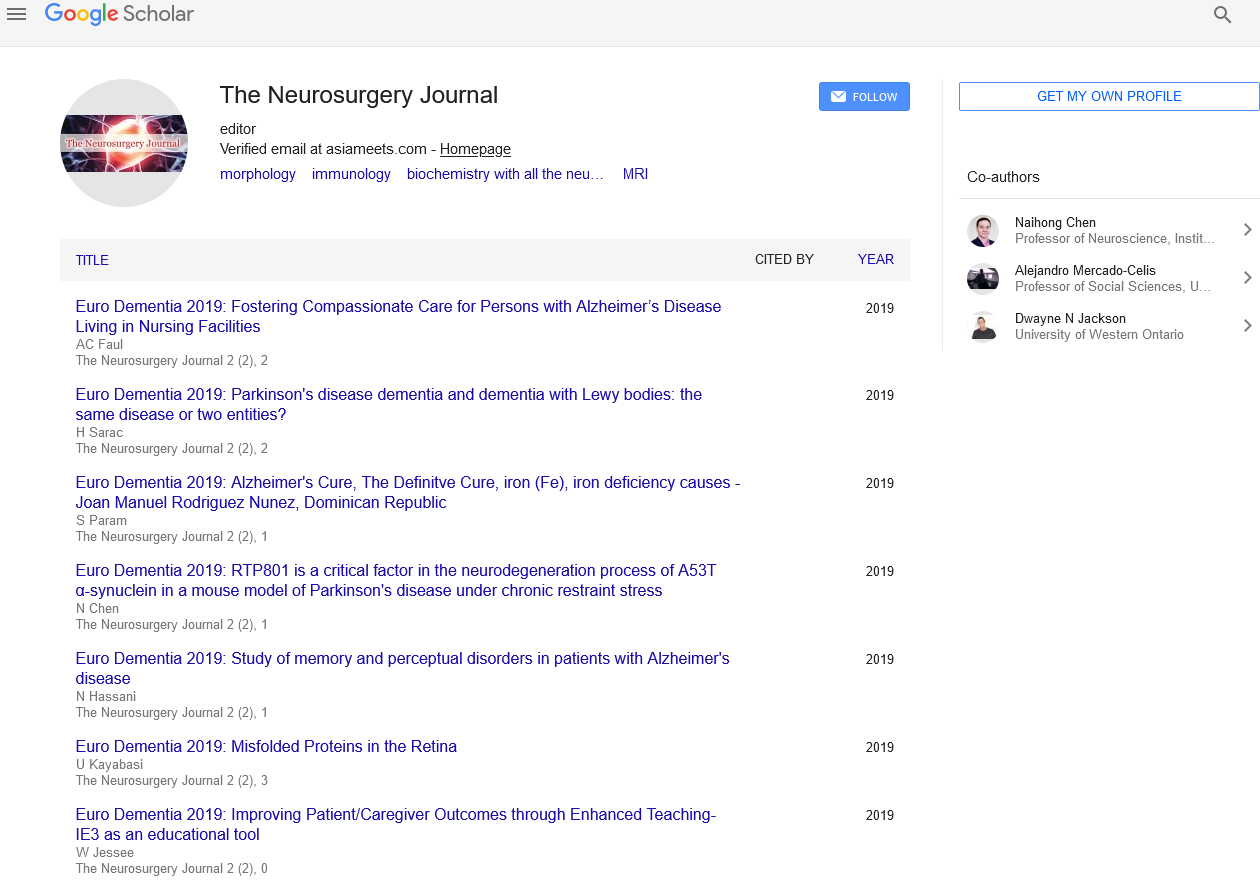short note on acoustic neuromas vestibular schwannomas
Received: 04-Aug-2021 Accepted Date: Aug 18, 2021; Published: 25-Aug-2021
Citation: Kouloulias M. Short note on acoustic neuromas/vestibular schwannomas. Neurosurg J. 2021;4(1):1
This open-access article is distributed under the terms of the Creative Commons Attribution Non-Commercial License (CC BY-NC) (http://creativecommons.org/licenses/by-nc/4.0/), which permits reuse, distribution and reproduction of the article, provided that the original work is properly cited and the reuse is restricted to noncommercial purposes. For commercial reuse, contact reprints@pulsus.com
Description
Acoustic neuroma is typically a benign (non-cancerous) slow-growing tumor that develops in the inner ear. It can affect your hearing and balance. Schwann cells are known to wrap around nerve fibers in the body. These cells can also cause acoustic neuromas. Schwann cells are the structures that wrap around and support nerve fibers in the brain.
A vestibular schwannoma is a type of tumor that appears on the other side of the vestibular nerve. Also, acoustic neuroma is a condition that affects the hearing of people.
There are two forms of acoustic neuromas: sporadic and neurofibromatosis type II. Approximately 2,500 to 3,000 individuals in the US are diagnosed with sporadic acoustic neuromas each year. This type of tumor usually affects only one ear.
A neuroma is diagnosed through a comprehensive evaluation that involves a clinically and various specialized tests. These include hearing exams, CT scans, and the brainstem auditory evoked response.
An MRI uses a radio frequency and magnetic field to produce crosssectional images in the body. A computer then scans the image using x-rays. An electronystagmography test is used to evaluate the balance of subjects with nystagmus. It can be also used to detect abnormal eye movements.
A hearing and neurological exam are done to check the brain's response to certain sounds. It can be triggered by an acoustic neuroma or a stroke.
The most common symptoms of acoustic neuroma are loss of hearing and tinnitus. Other symptoms, which can be mild or severe includes:
• Dizziness or vertigo (dysequilibrium)
• Facial numbness, tingling, weakness, or paralysis
• Clumsiness or unsteadiness
• Changes in taste
• Difficulty swallowing and hoarseness
• Confusion
• Headache and ear pain
The treatment for acoustic neuromas depends on many factors, such as age, gender, and hearing status. A comprehensive evaluation is also needed to determine the best course of action. A probe is used to monitor the function of the brain and nerves following tumor removal. If the tumor remains attached to the nerves, partial or near-total removal may be performed. During tumor removal, a probe is used to trigger and monitor the nerves and brainstem function. Because acoustic tumors grow slowly, small fragments of tumor capsules may be left attached to critical nerves. Partial or near-total removal has been advocated to lower the chances of facial nerve damage. If the tumor residue grows, radiosurgery may be used.
Stereotactic Radiosurgery is done to control the growth of the tumor but does not remove the tumor. It is used to treat small and medium-sized acoustic neuromas (<2.5 cm). Using highly focused radiation beams, radiosurgery works by damaging the DNA inside cells and making them unable to divide and reproduce.
Three surgical techniques that are used to treat an acoustic neuroma include- suboccipital (retrosigmoid), translabyrinthine, and middle fossa.
There are no evident risk factors for developing an acoustic neuroma. Most affect only one ear. This condition causes acoustic neuromas in both ears as a part of a hereditary disorder called neurofibromatosis type 2 that is seen in few cases.





